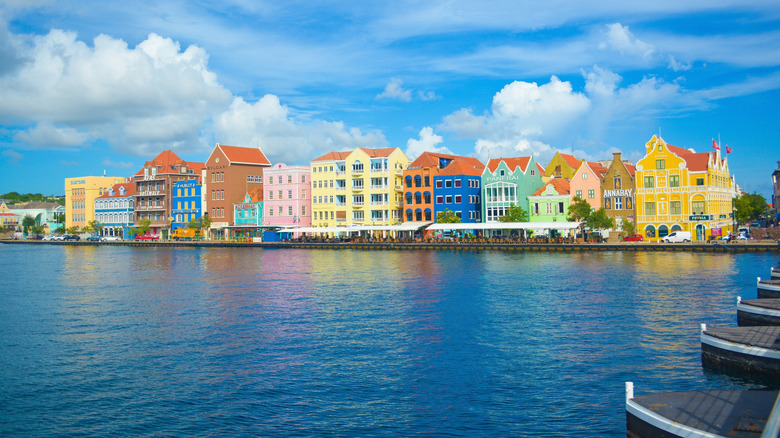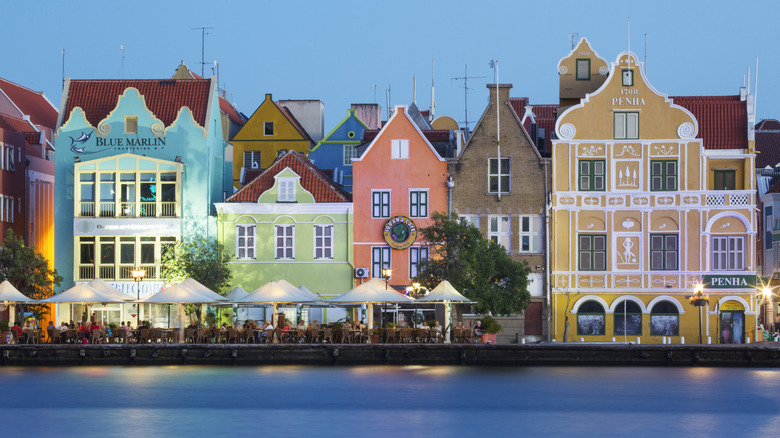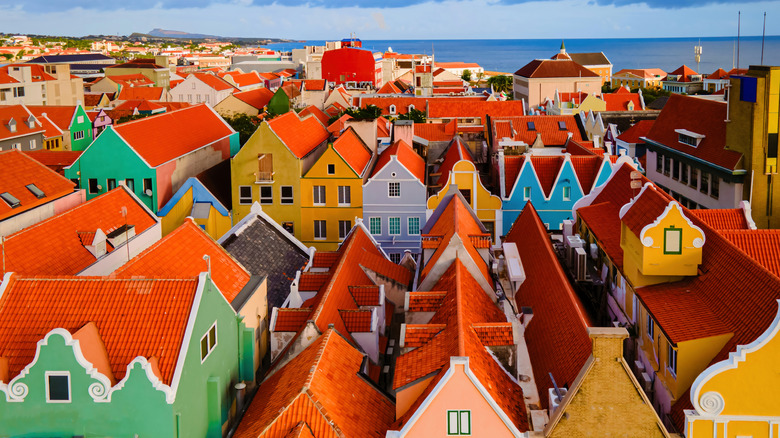Colorful Buildings Line The Streets Of A Lively Curaçao Neighborhood Blending European And Caribbean Vibes
In a (literal) sea of beauty and color, the Caribbean island of Curaçao stands out for its vibrant, historic buildings, excellent beaches, world-class diving, and the local orange liqueur — to name a few things. The island has indigenous, Spanish, Portuguese, and Dutch influences, evident in the music, food, culture, and architecture, all coalescing in its most populated city, the colorful and underrated capital of Willemstad. The most famous area of Willemstad is the neighborhood of Punda, one of the four historic districts within Willemstad that make up a UNESCO Heritage Site: Historic Area of Willemstad, Inner City and Harbour, Curaçao.
Punda is particularly known for its distinctive, Dutch Colonial buildings, complete with red roofs and bright reflections in that Caribbean blue water. Plenty of restaurants and historic sights are part of Punda, especially Handelskade, the picturesque strip of colorful buildings directly on the waterfront that look like Copenhagen's tourist-trap Nyhaven district.
According to Caribbean news network Loop News, local legends say the reason for the brightly painted buildings is that back in 1817, the original white buildings, coupled with the intense sun, caused the governor to have headaches. Other accounts say that the governor was part-owner of a nearby paint factory and made a profit from selling such colorful paints to the locals. Whatever the reason for the origins of this tradition, people from all over the world delight in the Caribbean's most colorful city.
Vibes of Willemstad and Punda
The heritage and history of Curaçao is long and complex, shaped by the indigenous groups of the island as well as influence from colonizers, from the Spanish and Portuguese to the Dutch, as well as other groups like Africans (originally brought over as slaves). The Dutch influence is most evident in Curaçao's architecture, as Curaçao is currently under the umbrella of the Dutch kingdom, along with the other ABC Islands (Aruba and Bonaire).
However, walking the streets of Punda gives you an appreciation for the many different cultures that created the unique atmosphere of Curaçao: many of the streets and landmarks have Dutch names, but the most common spoken language is Papiamentu, a Caribbean Creole with roots in Portuguese, Dutch, Spanish, and West African languages. The buildings are Dutch Colonial style, but with a twist, and they're painted in colors that symbolize the Caribbean. You'll find plenty of beer and wine, but a must-try is the eponymous liquor (curaçao or blue curaçao), made from peels of larahas, the "Golden Orange of Curaçao." The markets sell Portuguese-style bread rolls, while the "Floating Market" selling tropical fruits, vegetables, and fish takes place in the waters of St. Anna Bay, at the northern end of Handelskade. Every week, the main square of Punda, Queen Wilhelmina Park, hosts a "Punda Vibes" event. Stop by on Thursdays to see the Caribbean dancing and music event with a traditional market.
What to do in Punda and Curaçao
While Punda is an ideal place to just wander and get lost in the picturesque alleys, it's also home to an excellent selection of bars, restaurants, and cigar lounges. Bandido Cigar Lounge offers some of the finest Caribbean cigars, and there are plenty of cafés as well as a pizza and gelato shop. Once you're done in the pedestrian-only shopping district, enjoy the quarter's variety of highly Instagrammable spots, like the view from the famous Queen Emma Bridge, the Punda Love Heart, and the "Curaçao" letters in Queen Wilhelmina Park. History lovers should see Fort Amsterdam, Curaçao's oldest building, which dates back to 1635. History buffs will want to stop by the Curaçao Maritime History Museum, which also offers harbor tours on the water every Wednesday afternoon.
Curaçao's new digital nomad visa aims to inspire more people to move there, even temporarily. Most of the island's population lives in Willemstad, which is also home to the Curaçao International Airport. Although no one would blame you for spending a chunk of your vacation in Willemstad navigating lively neighborhoods like Punda, Curaçao also has some amazing beaches and everything that goes along with that: excellent snorkeling spots, unforgettable scuba diving experiences, and beach clubs on white sands.


